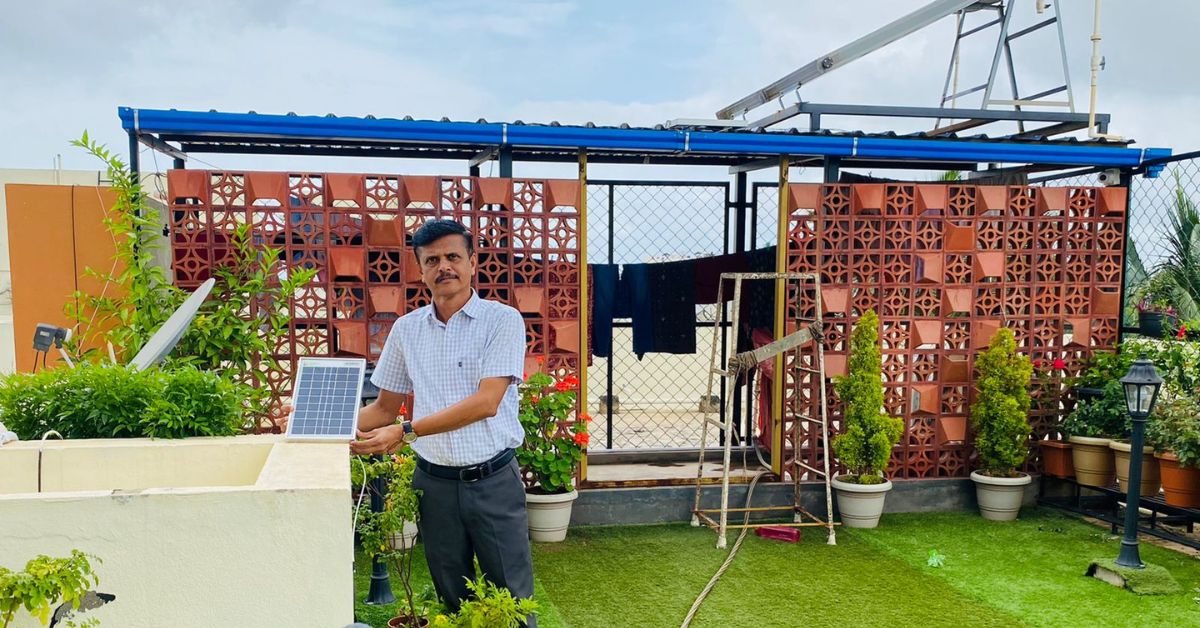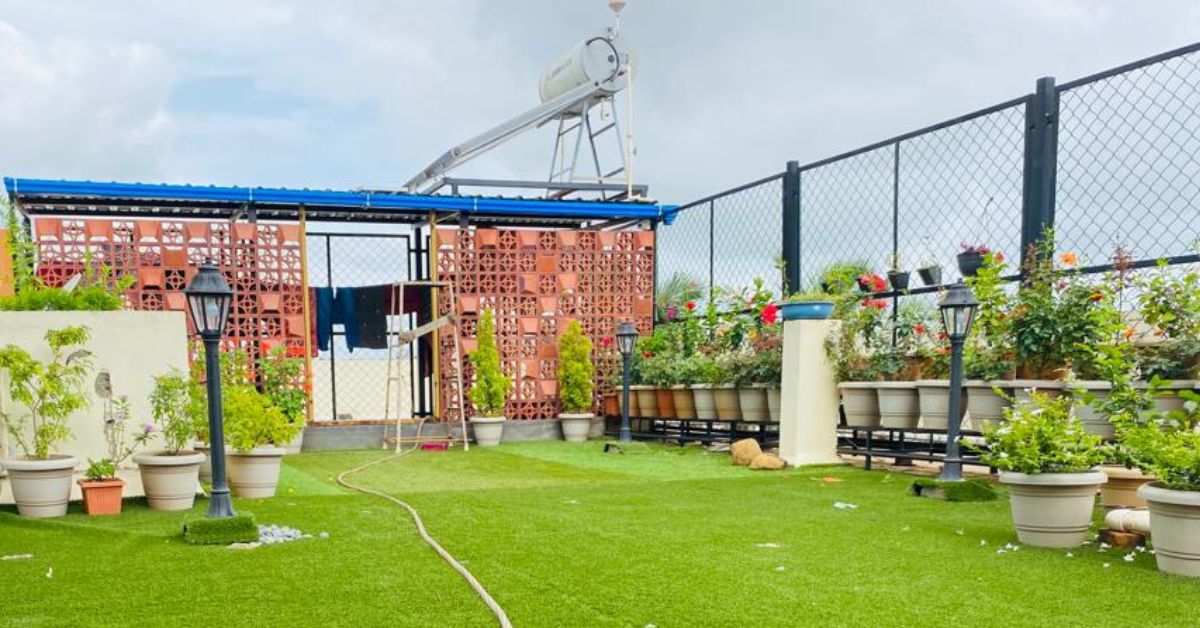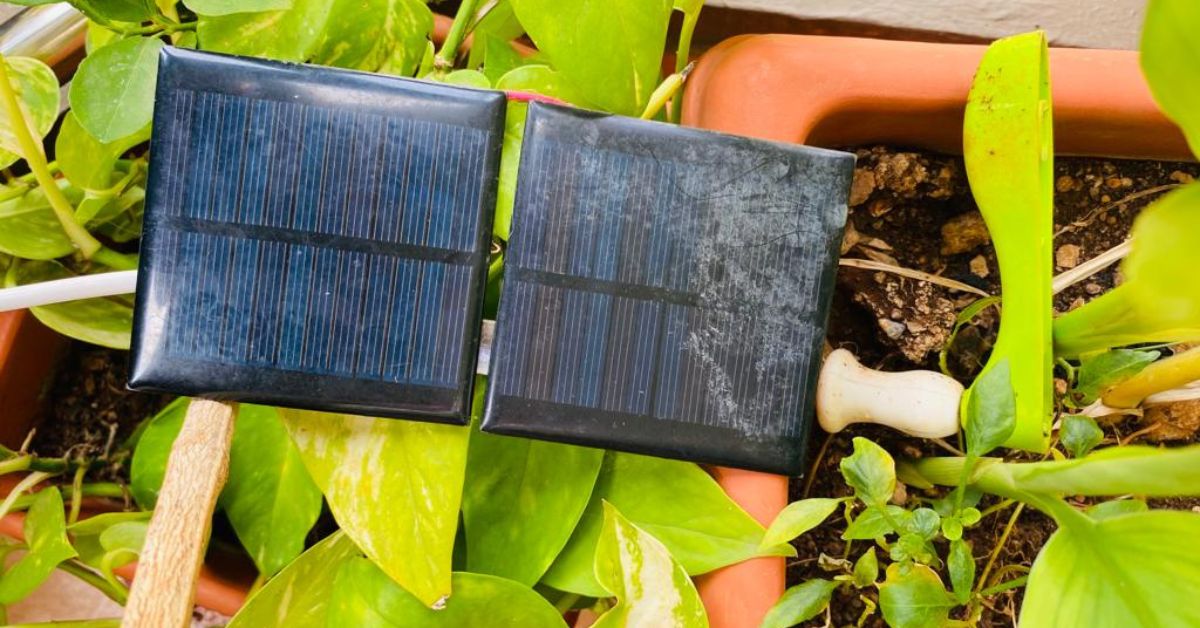‘How I Run EVs, Home & Office on Solar Power & Save Rs 2 Lakh/Year’: Architect’s Tips
Architect Sanjay Deshpande from Hubli, Karnataka, has been harvesting solar energy at his home and office for the past two years. He explains what it is like to live life off the grid.

During the late 90s, while Sanjay Deshpande was pursuing his studies in architecture in Mumbai, he happened to visit a friend’s house. There he had a conversation with his friend’s father, who suggested he harvest solar energy for his personal needs.
“I was staying in a rented room and was having trouble coping with the Mumbai heat. His father advised me to install a small solar panel to produce enough energy required to run the fan in my room. At that point, we were also studying alternative energies. So, I thought, why not try it,” Sanjay tells The Better India.
“I bought a small panel of 12V and 40W and kept it on the chajja (sun shade) of the window. It fetched me enough energy to run a table fan and a bulb in my room throughout the day. It saved me from the scorching heat and reduced my expenses,” recalls Sanjay, who is currently working as an architect based out of Hubli in Karnataka.
Taking lessons and motivation from his first experiment in harvesting solar energy, he decided to implement it in his native place, Hubli, when he returned home in 2000.
Today, his house and office are completely powered by solar energy, helping him save Rs 2 lakh per year.
One step at a time
In 1996, when Sanjay first started his experiment with solar energy, the panels were expensive. Over the last two decades, the price has reduced and it is much more economical now.
Later, in 2001, he installed a solar water heater at his house and then eventually added smaller panels to light his corridors and gardens. “I had to get them [solar panels] from places like Mumbai and Gujarat,” says Sanjay. “Smaller panels generate less power but they were less expensive as compared to bigger ones at that point.”
Moving forward in 2007, he bought a 1kW solar panel to replace his 1kW power inverter at home.

Skipping ahead to 2013, when he and his family moved to a new house in Bhavani Nagar in Hubli, he installed 165w 36V solar panels. “They generate less power but we were able to run our TV, fans and lights,” he adds.
Sanjay, who runs an architectural firm with his wife Suhasini, converted their office by installing solar panels of 3kW capacity in 2020. “Now it’s been two years since our office has been running completely on solar. We run five computers, printers, plotters, and everything off the grid,” he claims.

“We used to pay around Rs 4,500 – Rs 5,500 monthly as electricity bills for our office. But ever since we converted to solar, we get zero electricity bills,” he details, adding that now they pay nothing but the basic meter charges to HESCOM (Hubli Electricity Supply Company).
After successfully running his office on solar power for over a year, his next move was to convert his house completely to operate on solar energy. “I installed solar panels which can generate an average of 4.5kW of energy on my rooftop. With this we became fully off-grid,” he points out.
Suhasini says, “Now we have been running all our appliances, including heavy-duty ones like two fridges, washing machine, dishwasher, four air conditioners, and our two electric cars, on solar energy.”

She explains, “We used to pay around Rs 4,000 as electricity bill every month. Now our bills have been reduced to zero. Also, with the surplus energy produced being transferred to the HESCOM grid, they have been paying us around Rs 500 to Rs 1,000 monthly.”
According to Sanjay, as he and his wife travel very often to different sites daily, they needed two different vehicles. “With a petrol vehicle, we used to spend around Rs 12,000 per month just for the fuel. But ever since we switched to EVs, we haven’t had to spend a penny, as we charge them at home using solar energy,” he adds.
“So, monthly, I would say we have been saving around Rs 18,000 in personal expenses, which includes the house electricity bills and the fuel expense,” he claims.

Other than his office and house, Sanjay has been using solar energy on his two farms. “My mango farm in Mishrikoti village near Hubli uses solar energy mainly for irrigation. I have installed 3kW solar panels which help in running the high power pump sets to water the entire five acres,” he explains, adding that he has installed 1kW panels in his other two farms just for lighting for security purposes.
He also suggests using smaller solar panels for basic purposes. “In our house, other than the on-grid 4.5kW solar panels, we have installed several micro solar panels that are kept around the house on windows and balconies. These micro panels generate small amounts of energy and are used for lighting purposes in our corridors, terrace garden, balconies, and even as bedside lamps. There are also lights with solar sensors that light up automatically in the dark,” he explains.

He suggests that people can experiment with these micro panels first and later move to an on-grid system.
Sanjay says people often have several misconceptions when it comes to solar panels and energy generation. Even during cloudy or rainy days, there are solar panels that can generate around 60 per cent of the energy needed. “Though the panels generate 5kW power, people forget that they don’t require that much amount of energy in a day.”
He adds that another popular misconception is regarding the expense of installation. “For installing solar panels of capacity 4.5kW to 5kW is an on-grid system, we require around Rs 3 lakh, including the panels and mountings. If we put that Rs 3 lakh in a fixed deposit, we might get around Rs 1,200 per month as interest. But if we invest that money in setting up a solar energy system, it would fetch us almost triple the interest amount monthly by saving up on electricity bills. So, within a few years, we would get back what we invested,” he says.
Edited by Yoshita Rao
If you found our stories insightful, informative, or even just enjoyable, we invite you to consider making a voluntary payment to support the work we do at The Better India. Your contribution helps us continue producing quality content that educates, inspires, and drives positive change.
Choose one of the payment options below for your contribution-
By paying for the stories you value, you directly contribute to sustaining our efforts focused on making a difference in the world. Together, let’s ensure that impactful stories continue to be told and shared, enriching lives and communities alike.
Thank you for your support. Here are some frequently asked questions you might find helpful to know why you are contributing?


This story made me
-
97
-
121
-
89
-
167













